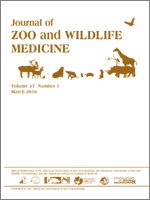Eye lesions are commonly observed in pinnipeds. Clinical assessment is challenging because animals are often blepharospastic and under inhalant anesthesia the globe rotates ventrally, making observation difficult. Retrobulbar and auriculopalpebral nerve block techniques have been developed in other species to alleviate these difficulties and allow for a more thorough ophthalmic exam. Ocular nerve block techniques were developed for California sea lions (CSLs) (Zalophus californianus) using lidocaine hydrochloride 2%. To develop the retrobulbar block, a variety of needle sizes, anatomic approaches, and volumes of methylene blue were injected into the orbits of 10 CSL cadavers. An optimal technique, based on desired distribution of methylene blue dye into periocular muscles and tissues, was determined to be a two-point (ventrolateral and ventromedial) transpalpebral injection with a 20-ga, 1 1/2-inch needle. This technique was then tested using lidocaine on 26 anesthetized animals prior to euthanasia, and on one case with clinical ocular disease. A dose of 4 mg/kg of lidocaine was considered ideal, with positive results and minimal complications. The retrobulbar block had a 76.9% rate of success (using 4 mg/kg of lidocaine), which was defined as the globe returning at least halfway to its central orientation with mydriasis. No systemic adverse effects were noted with this technique. The auriculopalpebral nerve block was also adapted for CSLs from techniques described in dogs, cattle, and horses. Lidocaine was injected (2–3 ml) by subcutaneous infiltration lateral to the orbital rim, where the auriculopalpebral nerve branch courses over the zygomatic arch. This block was used in five blepharospastic animals that were anesthetized for ophthalmic examinations. The auriculopalpebral nerve block was successful in 60% of the cases, which was defined as reduction or elimination of blepharospasm for up to 3 hr. Success appeared to be dependent more on the location of injection rather than on the dose administered.
How to translate text using browser tools
1 March 2016
DEVELOPMENT OF RETROBULBAR AND AURICULOPALPEBRAL NERVE BLOCKS IN CALIFORNIA SEA LIONS (ZALOPHUS CALIFORNIANUS)
J. Gutiérrez,
C. Simeone,
F. Gulland,
S. Johnson
ACCESS THE FULL ARTICLE
Auriculopalpebral nerve block
California sea lion (Zalophus californianus)
lidocaine
ocular disease
retrobulbar block





